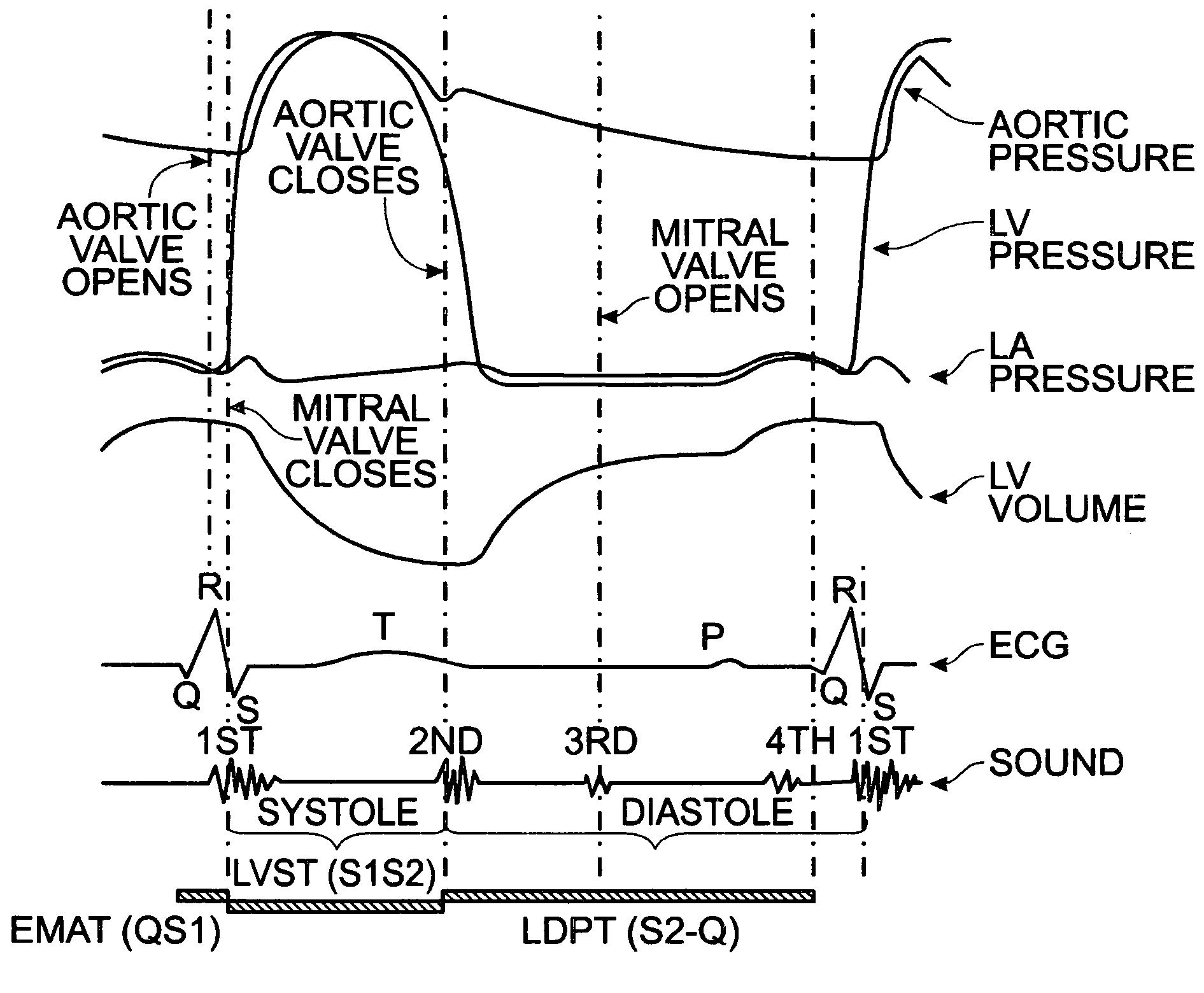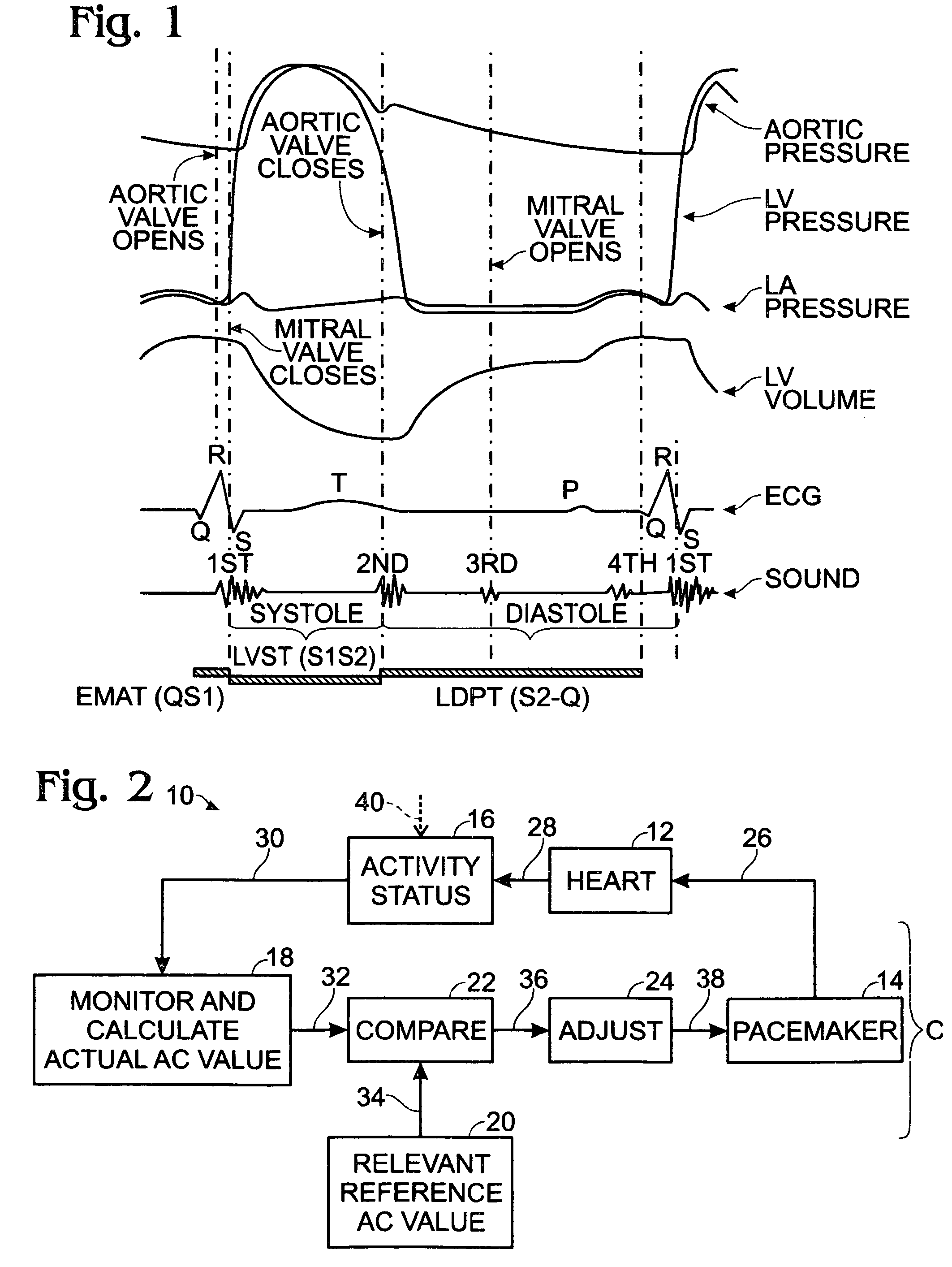Rest phase heart pacing
a heart rhythm and rest phase technology, applied in the field of acoustic cardiography, can solve problems such as shortness of breath and pushed back flue gas
- Summary
- Abstract
- Description
- Claims
- Application Information
AI Technical Summary
Benefits of technology
Problems solved by technology
Method used
Image
Examples
Embodiment Construction
[0027]Turning now to the drawings, and beginning with FIG. 1, for those who are generally skilled in the relevant art, the content of the time-based graphical display which is presented in this figure is completely familiar, and requires no particular elaboration. As will be observed, this content plainly illustrates the characteristics of the several, particular, different heart-functionality (physiologic) parameters, both electrical and acoustical, which differentially play roles in the AC-Value defining (calculating) practice of the present invention. These parameters, whose respective definitional characteristics which are relevant herein have been set forth above, include S1, S2, S3, % LVST and EMAT.
[0028]Switching attention to FIG. 2, indicated generally at 10 is a block / schematic diagram which illustrates the overall architectural layout, and the key features, of the methodology of the present invention. Methodology 10 is specifically illustrated and described herein in the c...
PUM
 Login to View More
Login to View More Abstract
Description
Claims
Application Information
 Login to View More
Login to View More - R&D
- Intellectual Property
- Life Sciences
- Materials
- Tech Scout
- Unparalleled Data Quality
- Higher Quality Content
- 60% Fewer Hallucinations
Browse by: Latest US Patents, China's latest patents, Technical Efficacy Thesaurus, Application Domain, Technology Topic, Popular Technical Reports.
© 2025 PatSnap. All rights reserved.Legal|Privacy policy|Modern Slavery Act Transparency Statement|Sitemap|About US| Contact US: help@patsnap.com


